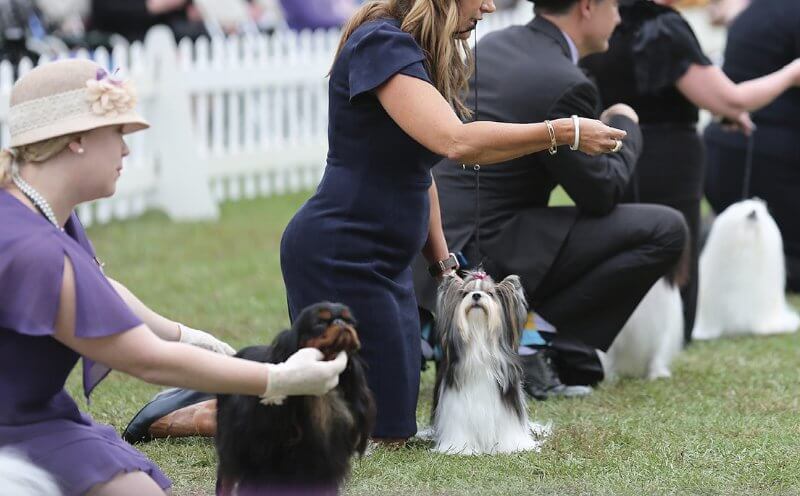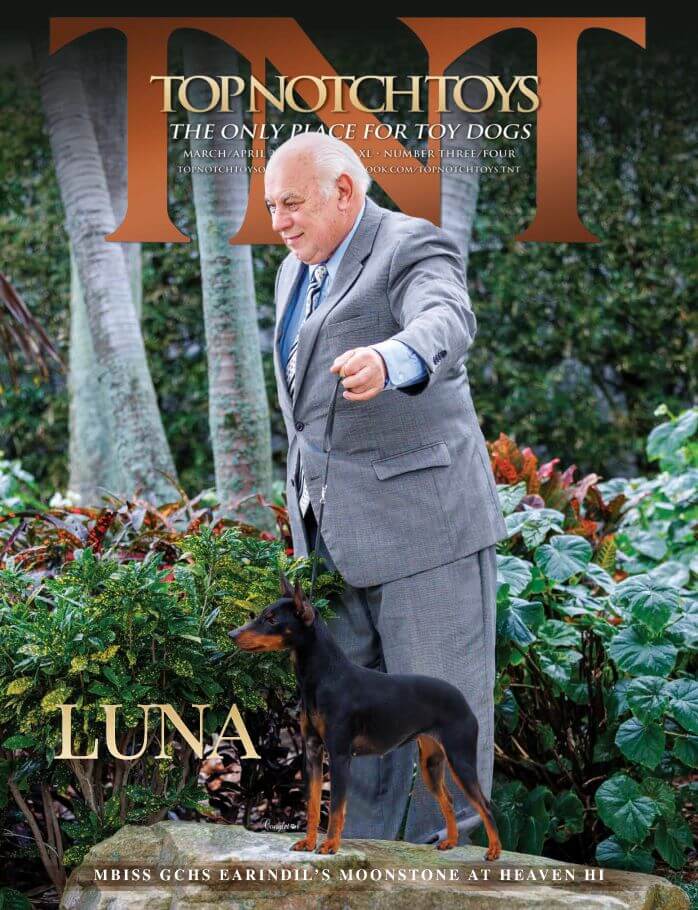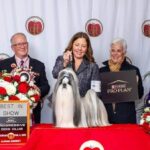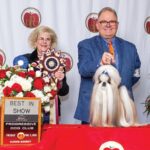The sport of Conformation is all about the evaluation of breeding stock, right? Well, at least that’s what we’ve all been told ever since the first benched shows were held in the mid-nineteenth century. But is it still true today that the typical all-breed show is a place where breed authorities assess the merits of purebred dogs according to a Breed Standard? Or has Conformation become just another Performance event?
According to the American Kennel Club, dog shows are about “producing conformity.” (This is a clear nod to the purebred dog breeder.) The AKC website has this to say about the purpose of Conformation shows: “Dogs are not being compared to each other; they’re being measured by how closely they conform to the standard of their particular breed.”
Of course, this statement is true in theory, and judges with an in-depth knowledge of a breed have always done their very best to sort through the entry of dogs they have in front of them. However, with today’s increased number of Conformation events—with their typically decreased entries overall—the modern American dog show must often rely on “paper adjudicators” who have satisfied the requirements necessary to judge a particular breed but have no “real world” experience with it. This shortcoming in the system encourages a shift in focus from one of conformity to a Breed Standard to one of conforming to a level of presentation; hence, the Conformance show as Performance event.
Let’s be honest. There has always been something of a “performance” element to dog shows in America. Although the very first competitions in this country were organized by sporting gentlemen who gathered their Pointers and Setters together to be evaluated by a trio of their contemporaries, these same men soon established kennel clubs which, ultimately, held all-breed shows in most major cities for the benefit of the general public. This incorporation coincided with the Industrial Revolution and The Gilded Age, and brought together people from all walks of life who shared a common interest (and a growing affection) for the purebred dog.
In those early days of the sport, working men and women could rub shoulders with ladies and gentlemen of means who initially imported dogs from Britain, Europe, and elsewhere. These captains of industry and society dames hired the best kennelmen of their day to scour the earth and bring back the best dogs that money could buy. Not only did these men have a keen eye for a dog and the ability to care for hundreds of animals (hence, the now rather antiquated use of “animal husbandry” to describe the care of canines and other agricultural stock), they also possessed the skills to present their clients’ dogs to best advantage.
These “handlers” were dog men (and later, women) through and through, and their complete dedication to their charges allowed them to perfect their craft in the ring. Over time, the manner in which each breed was expected to be presented was determined by these professionals—often by a single individual and his client’s big-winning dog. The presentation of Collies and Cocker Spaniels, for example, and each of the Terrier breeds, eventually became distinct—if not entirely breed-specific.
There has always been something of a “performance” element to dog shows in America.
With these unique presentation techniques firmly established (and expected) for individual breeds, the need to “stand out” in the ring became essential in order to win. If a breed was presented without being stacked by hand, then free-stacking would surely impress the judges more. And if every dog was free-stacked, then a dog would have to “nail it” in order to win. And if all the dogs in the ring were “nailing it,” then the dog that should win needed to be able to stand for three, five, or ten minutes at a time (at a distance of three, five, or ten feet from its handler) and be able to survive a staring contest that could capture not only the attention of the judge but also the scrutiny of the judges sitting ringside, the other handlers in the ring, and every spectator sitting ringside or watching the show live on AKC.tv.
Oh, and the winning dog would need to “use its ears” and wag its tail incessantly while fixated on the treat or toy held strategically by its handler. (And heaven help the dog that remembers it’s a dog and decides to smell the ground, move a foot, or look away. Where’s the performance in that?)
Of course, a Conformation show isn’t a Performance event. Not really. Any dog (mixed-breed, designer, and the dog bred in a backyard) has the potential to “shine” in the capable hands of an experienced and talented dog person. However, the sport of Conformation isn’t open to just any dog.
Only those purebreds that have been selectively bred, and presented in a manner which honors the Breed Standards, have any chance of winning with consistency. No amount of primping, prodding, or parading can hide a terrible topline, poorly made front, or bad feet. The judges who are steeped in a breed’s history will find them. Lesser judges may be fooled by all the flash and sparkle, but judges who are steeped in a breed’s history will find the faults. After all, the very best judges understand that, in the Conformation arena, the real performances take place in the whelping box.









